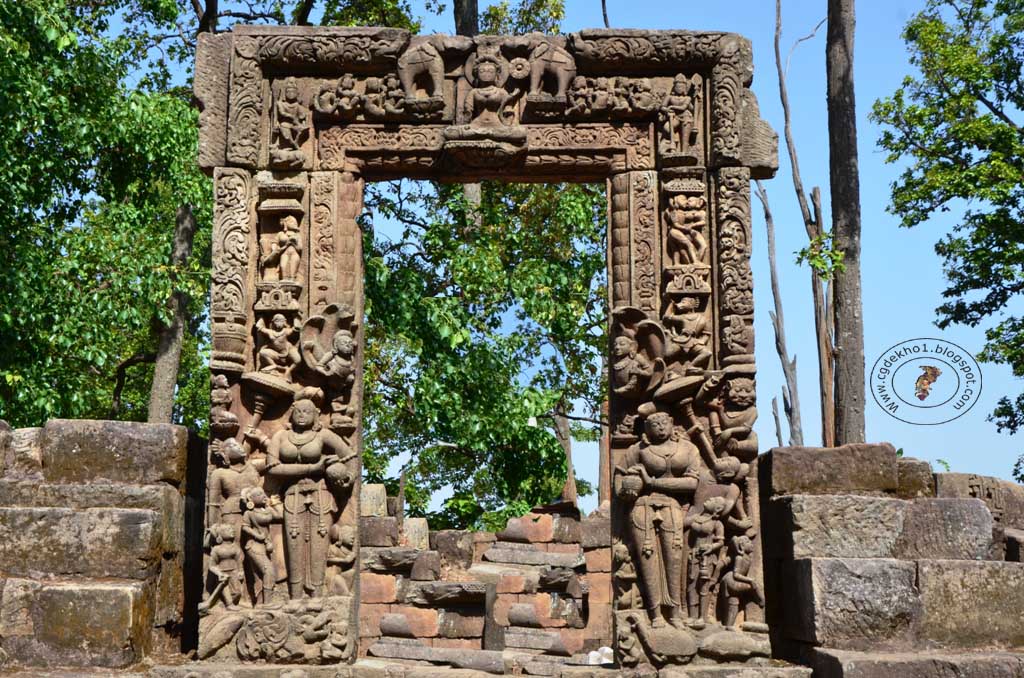Historical Place in Chhattisgarh: Deepadih, situated in the border area of Surguja, a tribal-dominated district of Chhattisgarh, is considered to be the richest and most important historical place in the area. The natural beauty of this area surrounded by hills and forests of Sarna trees attracts tourists. In the excavation conducted here in the year 1988, many ancient and rare artifacts were found, due to which this area came into the limelight. The word Deepadih means a mound of ancient ruined dwellings. Due to the use of the land of the ancient sites for agriculture, the ancient residential structures were destroyed. Despite this, the remains of ancient ruined temples remained present in the form of mounds. When these mounds were excavated, remains of ancient temples, statues, architectural fragments, and sculptures from the 7th to 10th centuries were found. In addition, many temples were also found, most of which were Shiva temples.
Samat Sarna is the main archaeological site of Deepadih.
Samat Sarna is the main archaeological site of Dipadih. It is said that in ancient times there was a war between Samat Raja and Tanginath, in which due to martyrdom, the queens of Samat Raja sacrificed their lives by jumping into the well. The local villagers used to worship the naked statue of Shiva (Pashudhar) considering it as Samat Raja, after his name this place is famous as Samat Sarna. In the Shiv temple located at Oraon Tola found during excavation, the artisans have shown amazing skill in carving folk life and animals. This fact is confirmed by the depiction of dancing peacocks, flying swans and heroines. In the use of ear ornaments mainly Pongal, Taraki and Bali have been used. A female statue is shown with different ornaments on both ears, which are still worn by the elderly women of Surguja region.
Great Shiva temple and wonderful confluence of three rivers
This 8th century Shiva temple is large and grand in size. Evidence of continuous architectural activity can be seen here till about the 13th century. This makes it clear that it must have been a centre of religious, social and economic activism. There are hills around this place, there is a plain in the middle and the important river of Surguja, Kanhar, passes through here. At a distance of less than a kilometre from here, a small river called Surya joins Kanhar on the upper left side. A little further down, another river called Galphulla joins it on the right side.
This confluence of three rivers may have been the main reason for the choice of this site. A two-metre high Shivalinga is installed on a square pedestal in the sanctum sanctorum of the temple. Among the statues found here, the statue of Uma-Maheshwar is particularly noteworthy. Giant statues of Ganesha in dancing posture, two-armed, four-armed and Kartikeya in joyful posture are displayed. The ferocious idol of Bhairav is garlanded with male glans. This statue of Bhairav is artistic though monstrous. The human-shaped statue of Pashudhar Shiva has elasticity of limbs and a mesmerising posture. There are 108 small Lingas in a large Shivalinga. The idol of the goddess has also featured prominently in the Deepadih sculpture. Nymphs, beautiful beauties and young heroines in various expressions are depicted in the sculpture. Somewhere, the feelings of the heroines are depicted with intense emotion as they look in the mirror, adorn themselves, braid their hair, show off their anklets, dance, wait for their beloved and wish to be courted.
Somewhere the hero is depicted removing the thorn stuck in the foot of his beloved with the blade of an arrow. The efforts of the sculptors in trying to show the spiritual elements and the worldly environment in a balanced manner in the Deepadih sculpture are praiseworthy. Many statues of Mahishasura Mardini, Chamunda, Yogini, Durga, Gauri, Skanda Mata, Sapta Matrika are of high quality from the artistic point of view. The efforts of the artisans in trying to show the spiritual elements and the worldly environment in a balanced manner in this sculpture are praiseworthy.
Beautiful view of the stepwells and Rani Pokhar.
There are old wells in Deepadih, there is a small Rani Pokhar, similarly there is a well behind the Samat-Sarna temple. Chaila mountain is also important for the interesting chapter of its ancient history. For the monuments of Deepadih, architectural blocks were cut from the nearby Chaila mountain and used for the construction of the temple. Tatapani is a place worth seeing in the vicinity. Here hot water comes out naturally from the earth. Scientists tested it many times, but they could not find out what is the source of hot water.
Disclaimer:
The information contained in this post is for general information purposes only. We make no representations or warranties of any kind, express or implied, about the completeness, accuracy, reliability, suitability or availability with respect to the website or the information, products, services, or related graphics contained on the post for any purpose.
We respect the intellectual property rights of content creators. If you are the owner of any material featured on our website and have concerns about its use, please contact us. We are committed to addressing any copyright issues promptly and will remove any material within 2 days of receiving a request from the rightful owner.

